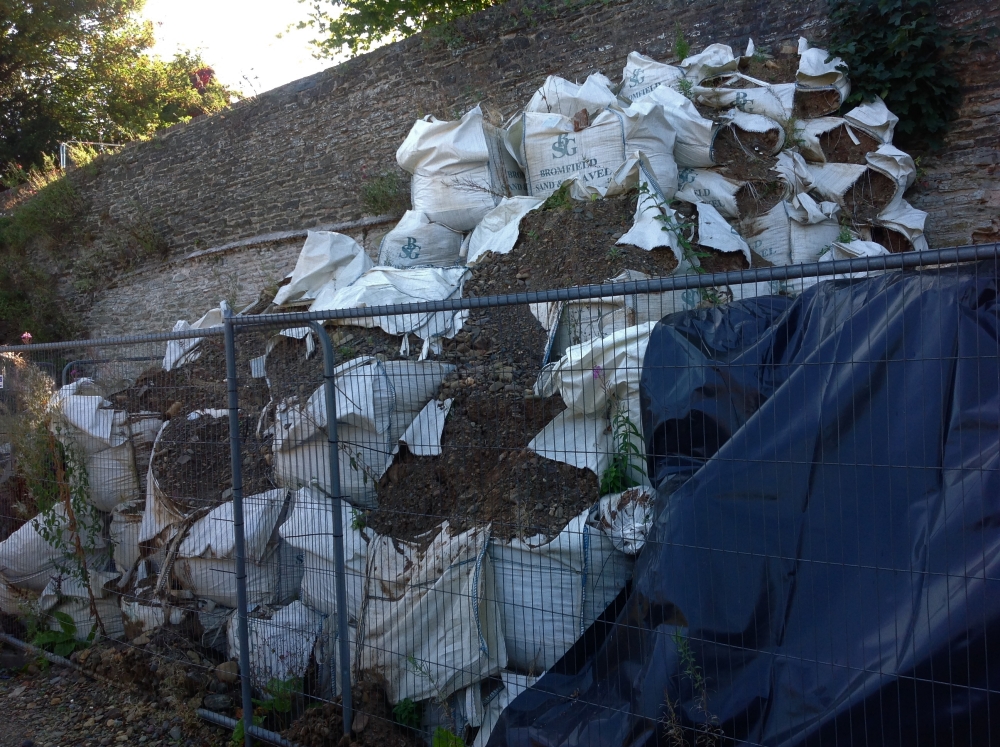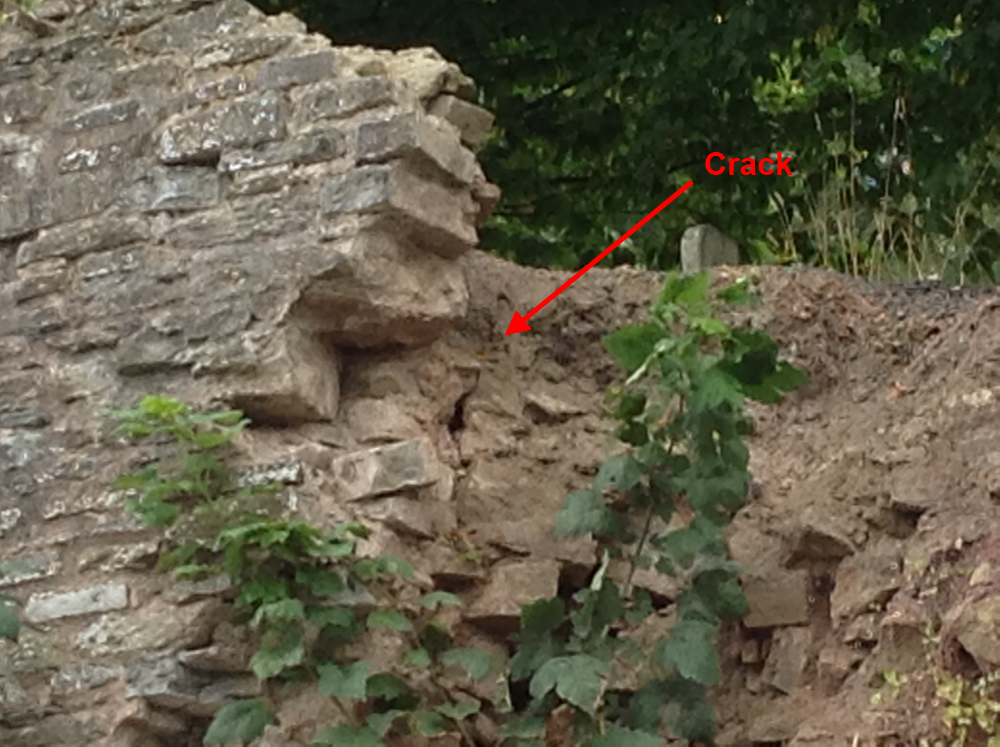On Thursday I spoke about the state of the town walls at Shropshire Council, following a question to Shropshire Council leader Keith Barrow. It was not a very successful session, with the speaker refusing to allow me to set out the context of why work is urgent. However, Keith did agree to meet me and said he was seeking an urgent solution to the town wall crisis.
On Friday, I met with council officers and contractors. The sole purpose of the meeting was to discuss temporary works to stabilise the wall and prevent further damage. Council officers suggested that, realistically, it might be two years before the wall is rebuilt. One proposal will prove very controversial – removal of two hornbeam trees above the breech in the wall.
The council agreed to repair the Heras fencing (it has already done so), and will tidy the grass. We wish to remove the benches by the wall behind the fencing. This is to make the area less attractive to youngsters and revellers. The council will store the benches and we need to think about refurbishing them.
The council’s contractors Ringway will rebuild the builders’ bag buttress and cover it with visqueen (heavy duty plastic) to prevent future collapse of the bags. The bags have weakened and spilt because they are not UV resilient. They were left uncovered and the heavy rain did the rest. The partial collapse of the buttress has left the top of the wall unprotected and a crack is opening up.
The vegetation growing on the wall will be sprayed off. The fleece covering of the collapsed section will be replaced to ensure that any human remains that tumble out will not be visible.
The big issue is the two hornbeams standing above the collapsed area. These are third and fourth from College Street. We will seek an opinion from an arboriculturist, but we think they may need to be felled to prevent damage to the historic wall. Tree four in particular has taken a pronounced lean in recent years.
This will be very controversial and I have asked the church and town council for their views. I will speak to the town council on this issue on Monday night (7pm at the Guildhall).
I had a site meeting with Peter Norman, Ludlow’s tree guru, and town councillor Glen Ginger on Saturday morning. I thank them for attending at very short notice. I am sure that Peter won’t mind me saying that he believes the trees are posing no threat to the public or the historic wall. That’s very important and if Shropshire Council’s arboricultural specialists agree, there is no case for removing the trees.
 Peter Norman climbs a hornbeam to investigate
Peter Norman climbs a hornbeam to investigate
The last thing I want is for these trees to be felled unnecessarily or without public engagement. But I also don’t to risk further damage to the wall. We must move quickly to do these works before the winter closes in. Our target is the end of October, earlier if possible.
That’s why I am telling you about these proposals now, not waiting until the decisions are made and work teams about to come on site.
Of course, we would not need to even think about removing the trees if we had rebuilt the wall. I’m not going to let up on getting that done. And I don’t want to wait two years to get the work done.
Update 26 October: Progress and the hornbeams stay
There has been some progress in negotiations on repairing the collapsed wall behind St Laurence’s. I can’t give details of confidential talks but I have more optimism we might make progress than I have had of late. We will also get the temporary builders’ bag buttress repaired in mid-November, along with some new coverings, removal of benches and strengthening of security fencing. There are no plans to remove the hornbeams as tree specialists say they are not likely to fall. That’s good news and let’s hope that there are no further problems with the wall that might threaten the trees’ stability. We hope to start archaeological surveys of the churchyard soon. I’ll keep you up-to-date as work progresses.


